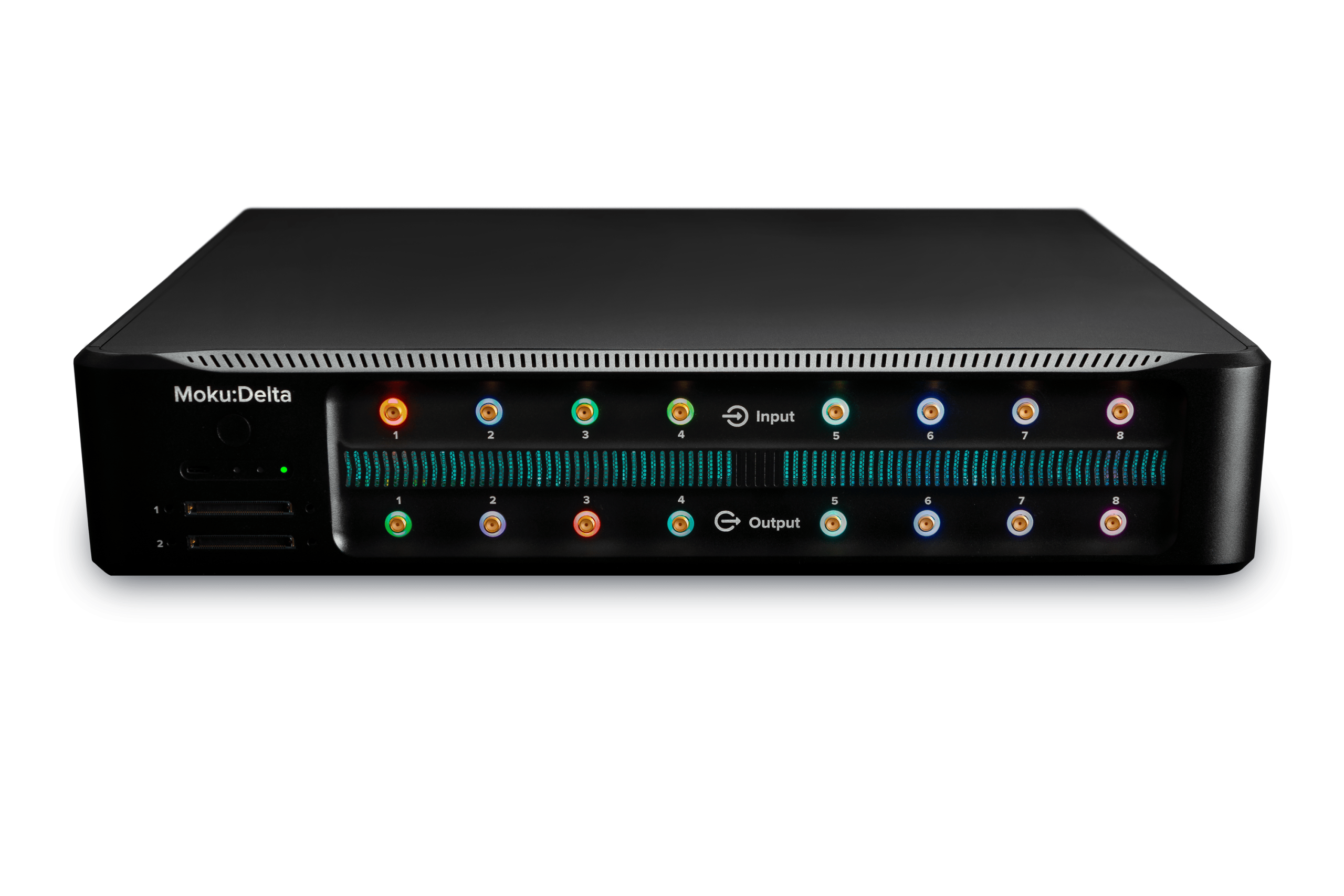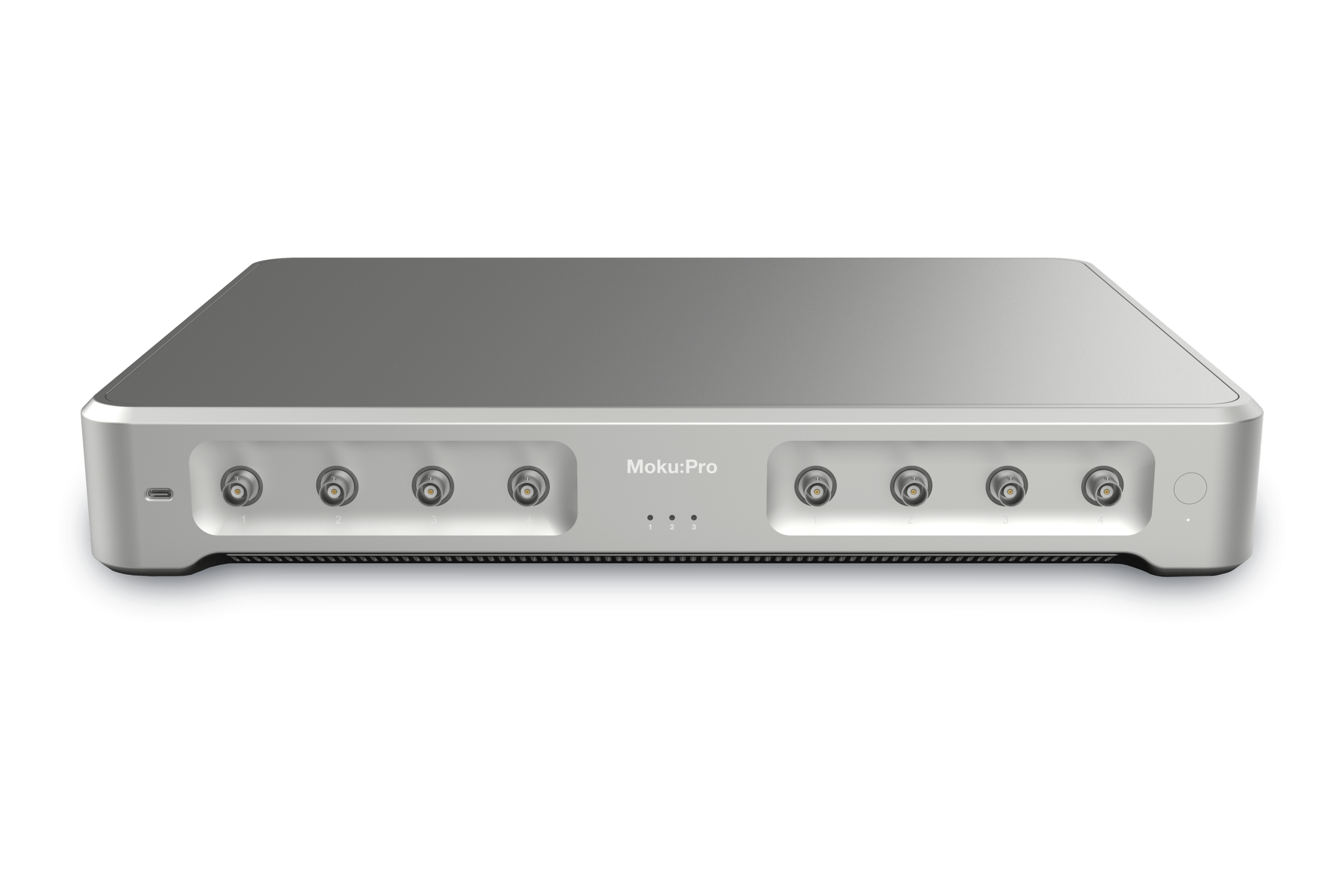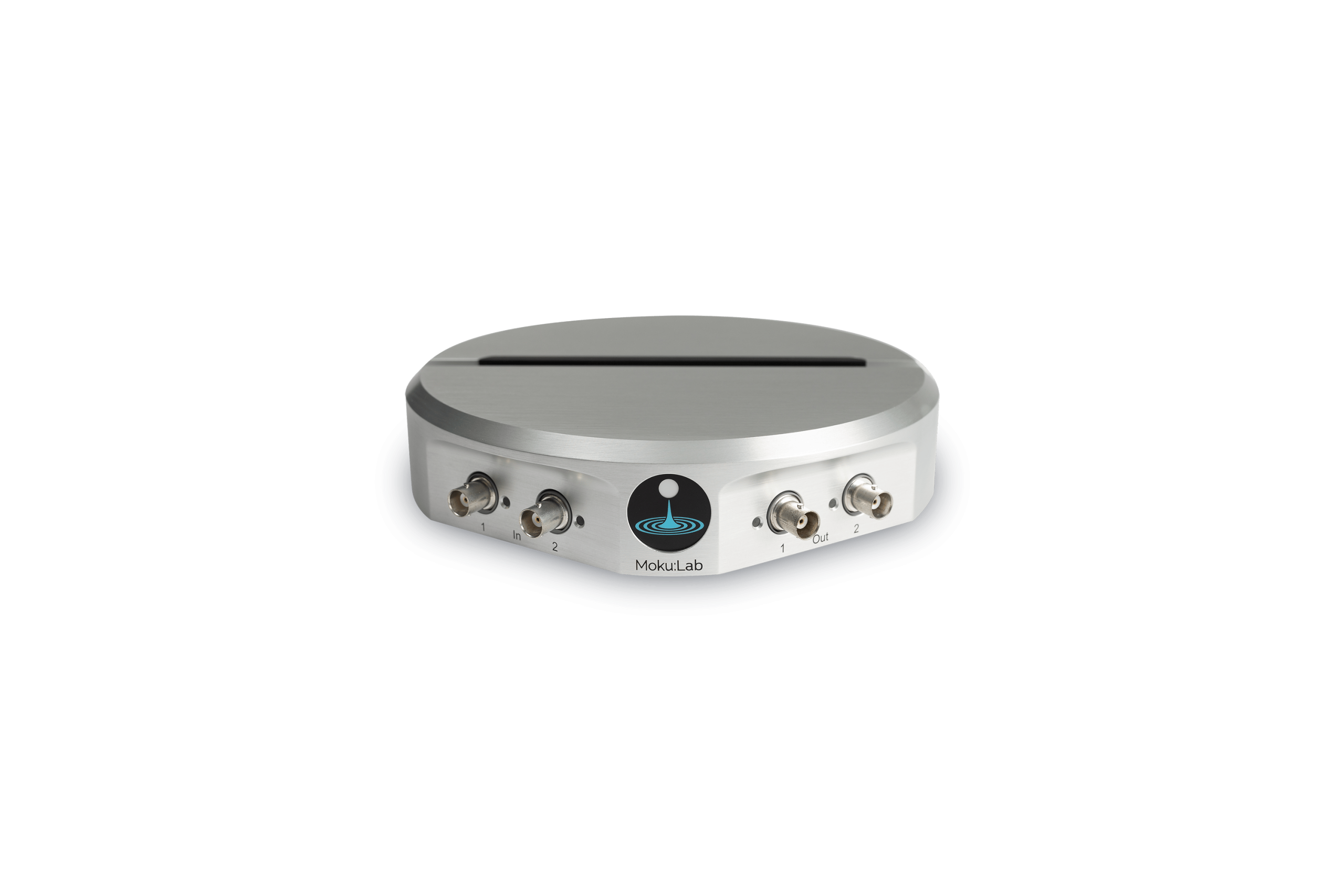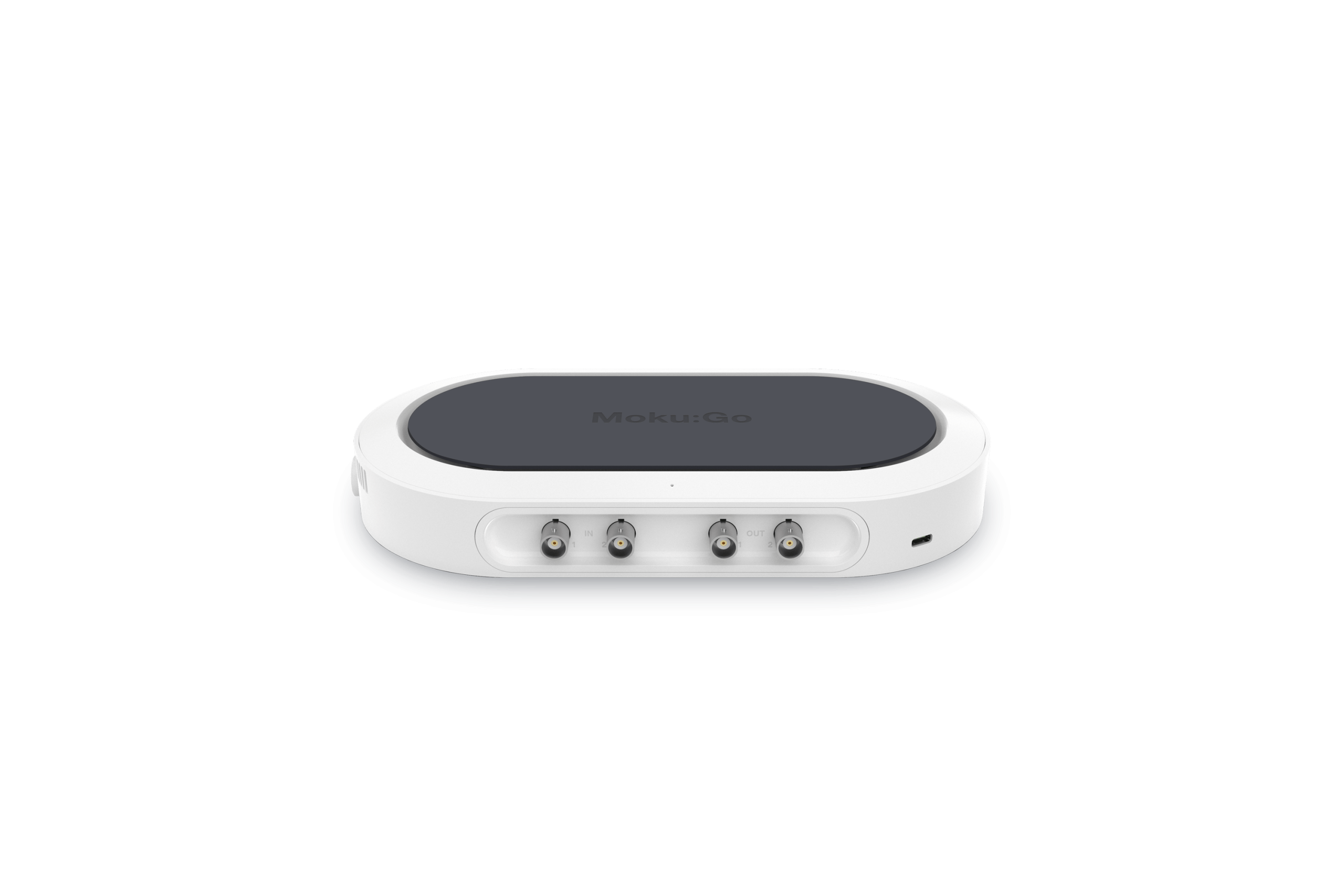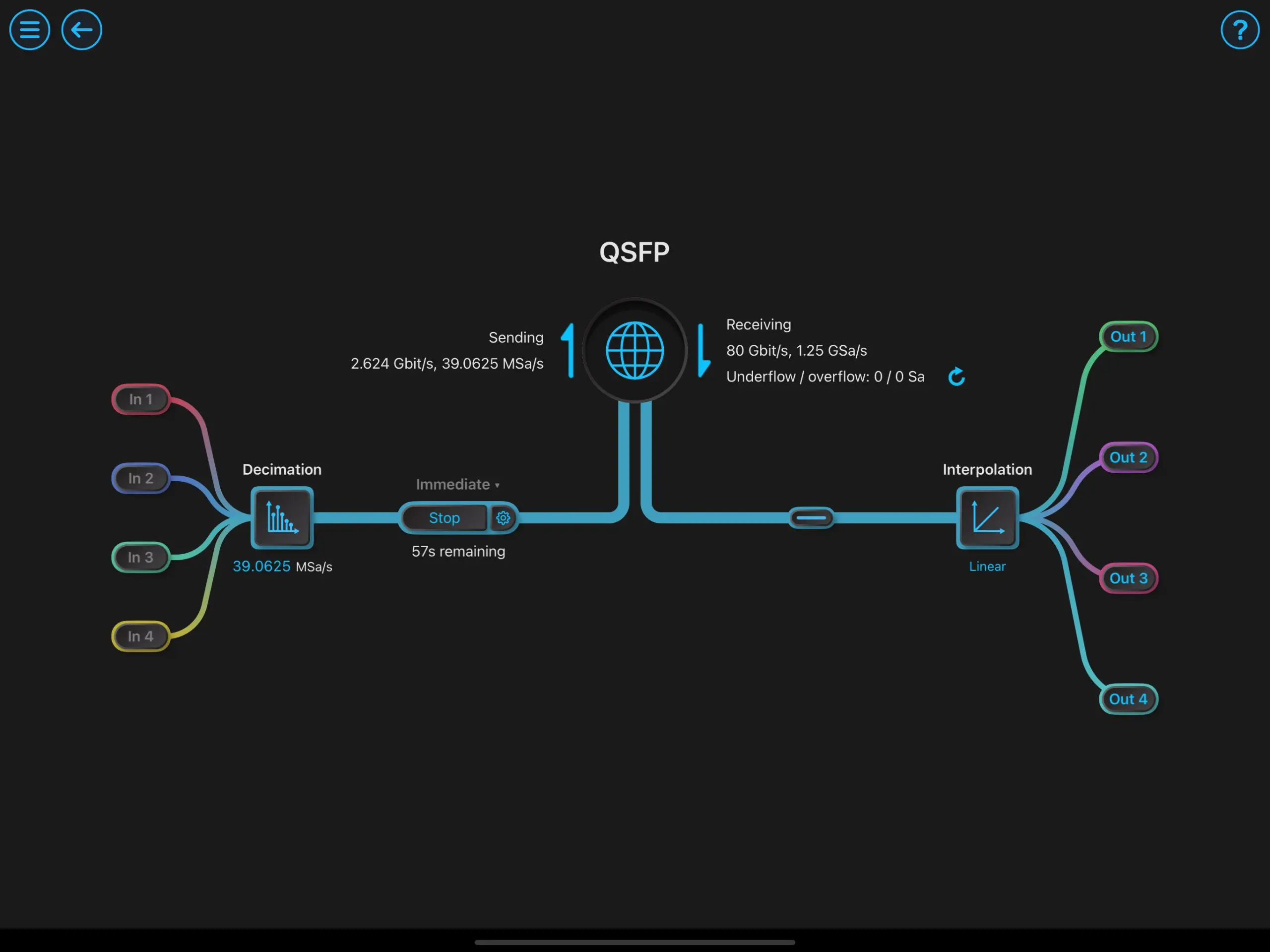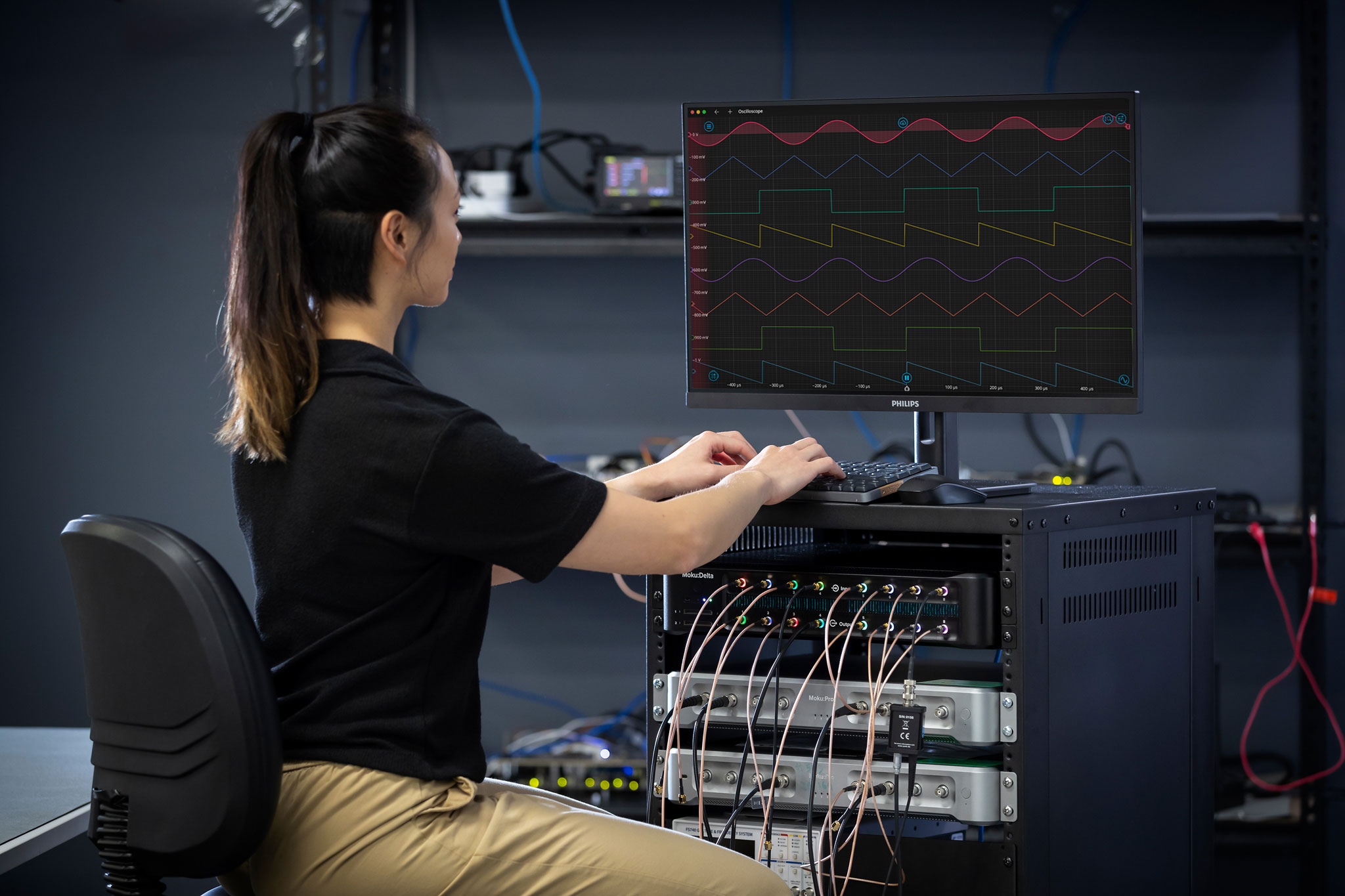This recap and Q+A complement our webinar, Quantum sensing with atomic systems and reconfigurable instrumentation, which we co-hosted with Photonics Media on July 23rd, 2025. If you weren’t able to attend live, you can register now for on-demand access.
In addition to a webinar summary, we’re providing in-depth answers to select audience questions below.
Webinar recap
During this presentation, we opened with some of the physics behind quantum sensing, including requirements for creating a quantum sensor and an in-depth explanation of magnetometry using neutral atoms and Ramsey interferometry. We then discussed many of the difficulties in performing quantum sensing experiments, including laser instability, jitter, and low SNR. Lastly, we introduced Moku and highlighted some of the instruments that could help address these challenges.
In a live demonstration, we showed different techniques for evaluating phase stability and measuring precise time intervals, using the Phasemeter and Time & Frequency Analyzer. We also mimicked a Ramsey sequence using the Moku Arbitrary Waveform Generator and showed how to demodulate input pulses using the Lock-in Amplifier.
Questions from the audience
With no built-in preamplifier, is the input sensitivity of Moku devices determined by the ADC resolution and input voltage range? How can you determine the actual sensitivity in real-world conditions, including the effects of noise, temperature, and other non-idealities?
Moku:Delta and Moku:Pro devices use a blended ADC architecture to optimize performance across a wide frequency range. At lower frequencies, the signal path uses a high-resolution ADC (up to 20 bits in Moku:Delta), while at higher frequencies, it blends in a faster, lower-resolution ADC (14-bit for Moku:Delta). This approach maintains low noise across a broad bandwidth, but it also means that input sensitivity isn’t a fixed value.
You can estimate the theoretical resolution based on bit depth and full-scale input range. For instance, 20-bit resolution over a ±5 V range (10 Vpp) yields a quantization step of approximately 9.5 µV. However, this figure only reflects the ADC’s ideal quantization limit. In practice, sensitivity is defined by the system’s noise floor, which includes contributions from thermal noise, analog front-end components, reference stability, and even clock jitter. These factors vary with both frequency and environment.
To determine real-world sensitivity, we recommend using the Spectrum Analyzer instrument with the inputs shorted or terminated to 50 Ω. This allows you to directly measure the RMS noise within your frequency band of interest. For even better performance, the Spectrum Analyzer’s cross-correlation function can help reduce uncorrelated noise sources, which can recover signals below the individual channel noise floors.
For applications involving extremely low-level signals (µV or nV), many users opt to integrate external low-noise preamplifiers, giving you the flexibility to match the front-end sensitivity to your specific measurement requirements. Moku’s flexible architecture enables you to characterize your system’s effective sensitivity with precision, and in many cases, extract signals far below the ADC’s nominal LSB through smart signal processing techniques like averaging, filtering, and lock-in detection.
Are PLL and PID feedback possible?
Yes, Moku provides dedicated tools for implementing both Phase-Locked Loops (PLLs) and Proportional-Integral-Derivative (PID) control.
PLLs are used to monitor a periodic input signal and generate an error signal when the frequency or phase drifts from a reference. This error signal can then drive a voltage-controlled oscillator (VCO) or another actuator to keep the output “locked” to the input. Users can create custom PLLs using instruments like the Lock-in Amplifier and Waveform Generator, while the Phasemeter instrument includes built-in PLLs on each input channel for microradian-level phase tracking resolution.
To learn more about PLLs, see our webinar on the topic.
For general feedback applications, all Moku devices also support a standalone PID Controller instrument. Additionally, several instruments, including the Laser Lock Box and Lock-in Amplifier, offer integrated PID control blocks for implementing real-time feedback within those instruments.
To read about control theory and PID design, see our application note.
These features allow users to implement closed-loop control across a wide range of classical and quantum sensing experiments, from cavity stabilization to active frequency locking and drift compensation.
What’s the maximum output bandwidth? Do any Moku devices support IQ mixing or upconversion?
Moku:Pro supports signal generation up to 500 MHz and acquisition up to 600 MHz, while Moku:Delta extends both input and output bandwidth to 2 GHz. If you need to generate or measure signals in the GHz range, for example, to drive solid-state qubits or other microwave-frequency transitions, you’ll typically use an external IQ mixer for upconversion or downconversion.
All Moku devices support IQ waveform generation through the Arbitrary Waveform Generator, allowing you to generate phase-synchronized baseband I and Q signals that feed directly into an external IQ mixer. This allows you to shift your signal up into the microwave domain using an external local oscillator (LO). It’s a common and effective technique for not only quantum experiments, but radar prototyping, wireless communications, and other high-frequency applications.
So while the IQ mixer hardware is external, the baseband signal generation can be fully handled by Moku, no matter what device you’re using, as long as you’re within the analog output bandwidth of the device.
What is the achievable time resolution when using Moku? What factors affect its practical limit?
The Moku:Pro Time & Frequency Analyzer features a digital bin width of 0.78 ps, which defines the minimum resolvable time difference between two events in the absence of noise. However, it’s important to interpret this number in context. Jitter, not bin width, is typically the limiting factor in real-world time resolution.
For Moku:Pro, the instrument jitter is specified to be <20 ps RMS. This is primarily governed by the stability and phase noise of the internal system clock, along with the timing precision of the ADC and analog frontend, which are part of the signal path even for digital-like events such as TTL pulses. This jitter defines the practical limit on how precisely you can measure the time between two independent events.
In short, jitter reflects the timing uncertainty introduced by the hardware, and is typically the dominant limiting factor in precision timing applications, as opposed to the granularity of the timestamping system. If you’d like to read more about the differences between these two quantities, read our application note on the topic.
Moku’s level of timing performance is well suited for applications like coincidence detection, time-correlated single-photon counting (TCSPC), and quantum optics experiments, where picosecond-level resolution is required.
Thank you for viewing the webinar. If you have further questions, please see the links below.
